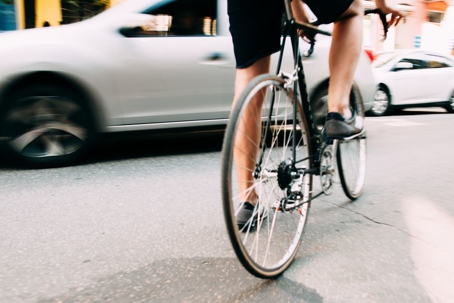Following the rules of the road is always important to help reduce the chances of an accident. As a bicyclist, following the rules means riding on the right side of the road and with the flow of traffic whenever possible. Remember the easy tip: When on public streets, the right side is the right side.
When to Stay in the Center of Your Lane
In Florida, bicyclists are instructed to stay to the right side of their lane when possible and when the lane is wide enough to allow a car to pass on the left without fully leaving the lane. However, if you are concerned that the lane is too narrow to allow safe passing, then you are permitted to command the entire lane and stay in its center. Even if you are traveling slower than the surrounding traffic, you are allowed to remain in the center of the lane if it is the safer option and makes you more visible to approaching vehicles.
As a bicyclist in Florida, you are not a pedestrian. Technically, it means you are a vehicle. This technicality is why you can take the center of the lane when needed. But it is also why you do not have an automatic right-of-way like pedestrians do. Whenever you are riding your bicycle, be mindful of who has the right-of-way, whether they are a pedestrian, a motorist, or another bicyclist.
When to Go to the Left Side
There are times when you should stay near the left side of your lane. Specifically, if you need to make a left turn or change lanes to the left, then you might not be able to accomplish these maneuvers safely while staying to the right side. As you approach your left turn or lane change, also approach the left side of your lane, double-checking that the motorist behind and next to you has acknowledged your presence. Try to spend as little time on the left side of your lane as possible while you complete the maneuver.
Bike Lanes Take Priority
In many municipalities, bike lanes will take priority whenever they are present. To be safe and also to avoid getting a citation, you should use bike lanes when you can. Bike lanes are usually on the right side of the road, but not all of them, so be mindful when bicycling in a new city or area.
You might also have the opportunity to use dedicated bicycle paths that intersect an entire city while using public roads as little as possible. If you can make your route with a bike path, then you should definitely consider using this option to not only improve your travel times – no traffic lights on bike paths – and decrease your chances of getting into a bicycle accident.
For more information about bicycle safety in Florida, you can click here to visit the Florida Highway Safety and Motor Vehicles website. Although the tips and hints are listed under “child safety,” they apply to all bicyclists. For legal representation after being in a bicycle accident in Daytona Beach, call (386) 333-6613 and schedule a free consultation 24/7 with Politis & Matovina, P.A.

